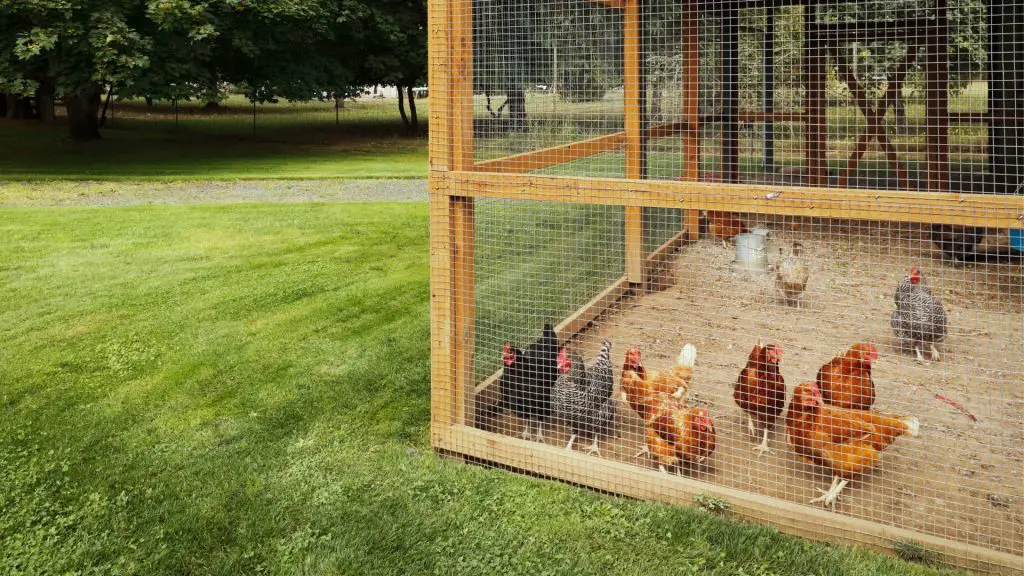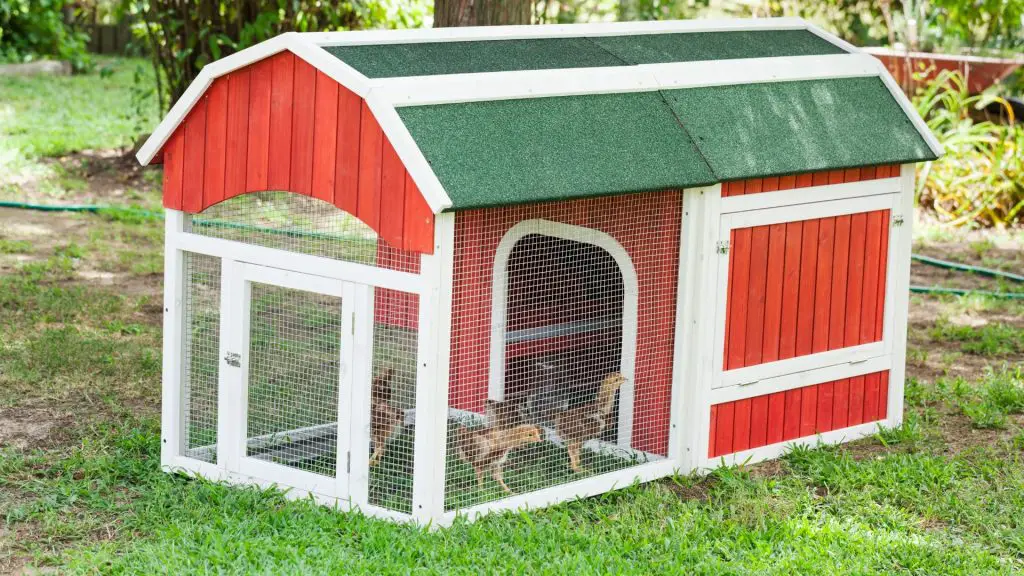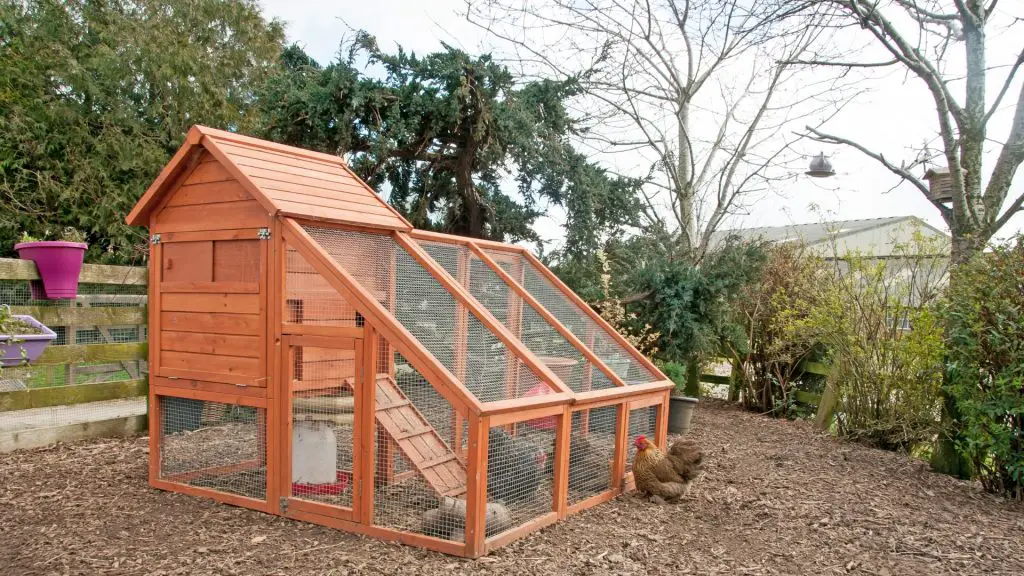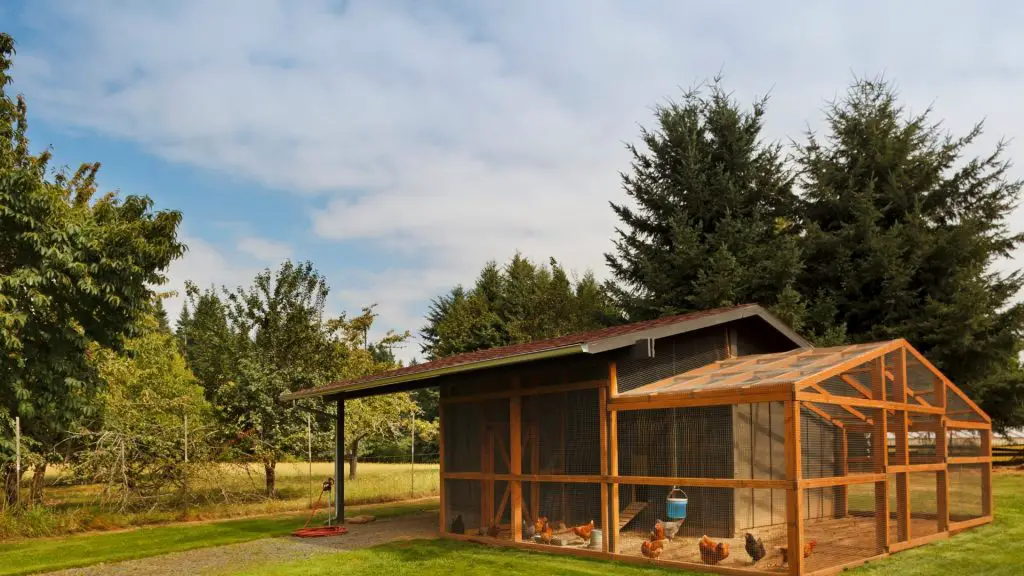Raising poultry in the backyard is a pleasing experience and a great way for children to learn about nature, agriculture, and taking responsibility for caring for chickens. Before starting your little project, you need to have a proper chicken coop, but where?
Where to put chicken coop? Put a chicken coop under a tree to provide them both sunlight and shade. Raise it a few inches above the ground to prevent potential predators, dampness, and associated disease. Also, keep it a bit far from your house as the smell, noise, and flies around them can disturb you.
Keep reading to learn more about the requirements of a proper chicken coop for your backyard project.
Best Place for a Chicken Coop

The chicken coop placement is the first and maybe most important step in raising small-scale poultry. First, check out your state’s regulations on backyard poultry raising and make sure there’s no prohibition.
Then, find a place that’s easy to access and feed. It should also be a high-traffic area to ward off wild animals.
How High Should a Chicken Coop Be Off the Ground?
A chicken coop should be off the ground for at least 8 to 12 inches or 1 to 3 feet to protect your poultry efficiently. Some people use pressure-treated lumber to tolerate the coop’s weight. But theoretically, it’s possible to use non-pressure treated lumber sitting on bricks or concrete.
Why Are Chicken Coops off the Ground?
As a rule of thumb, all the chicken coops should be elevated.
An off-the-ground coop can prevent predators from entering, thus reducing the potential loss of birds or eggs. This keeps the coop from moisture damages—especially the wooden or metal parts—and provides more ventilation crucial for healthy chickens. It would also be easier to clean and maintain.
Elevating a chicken coop lowers the possibility of nesting rats, mice, or even snakes entering through the floor. It also keeps out other predators like foxes, coyotes, and raccoons, as well as any disease they may carry.
Additionally, it helps the chickens to endure the cold days better because it keeps the floor dry. It also provides a good shelter for the birds on rainy or windy days.
Should a Chicken Coop Be In the Shade?

Chicken coops should be in the shade, but only as long as their pen can provide them enough sunlight. That’s because they need both light and shade to adjust their body temperature according to the season.
Full shade can prevent the coops from receiving enough light, hence reducing egg production. The ideal amount of light to maximize laying eggs is 16 hours. It may also lead to a damper environment, increasing the flock’s risk of disease and mortality.
On the other hand, placing the pen in full sunlight is dangerous, too.
In an ideal world, put the coop and pen under a deciduous tree. It provides both shades in summer and sunlight in winter.
How Far Should Chicken Coop Be From the House?

The chicken coop needs to be placed far away from home for the sake of sanitation issues.
Generally, the further the chicken coop from the house, the better. But its distance shouldn’t be so much that it causes trouble in feeding or caring for them.
Chicken coops should be at least 10ft (3.05m) away from your house, 5 to 10 ft (1.52 to 3.05 m) away from other property lines, and 10 to 20 ft (3.05 to 6.1 m) from the adjacent residence. That’s enough to protect you and the neighbors from their odor, noise, and flies due to droppings and food residue.
Related: Where to Buy Chicken Coops? | Check Before Buying!
What’s the Best Flooring for a Chicken Coop?
You can use different materials in coops as proper bedding for the chickens: Wood shavings, sand, hay, straw, grass clippings, and even peanut shells.
But the best flooring is probably the wood shavings like pine shaving. They absorb water efficiently and dry quickly. Besides, unlike hay and straw, wood shavings don’t mat down quickly.
Some of the best coop bedding qualities include being inexpensive, durable, lightweight, absorbent, fast-drying, easy-to-handle, medium-sized particles, and non-toxic. Wood chips have many of these qualities.
Avoid cedar shavings as they may be toxic for chickens. The hollow stems of dried hay and straw may also contain parasites, bringing all sorts of nastiness into your backyard.
Best litter condition comes with a deep-litter system—a 150 mm (15 cm) layer of flooring material. But remember to keep the depth by adding more material when needed. It provides a warm and comfortable environment for the flock, especially during the winter.
Sand and mulch are also great for chicken’s sand bathing and killing bacteria and fungus.
Insulating the Chicken Coop
A proper chicken coop requires insulating the walls. The walls of the chicken coop must be insulated with good and high-quality material. This procedure will help the chickens to keep warm in the winter and cool in the summer. Insulating also helps the chickens to stay dry.
There are several materials for insulating your coop. You can use cardboard, styrofoam, spray foam insulation, straw, or even woolen blankets considering your budget, time, and availability.
Related: How to Insulate a Chicken Coop? | Tips and Guide
How Big a Chicken Coop Should Be?

Ensure it’s a relatively large area, enough to accommodate both the coop and pen. Consider the number of birds and dedicate as much space as they’re comfortable with—at least 2.5 to 3.5 sq. ft. (0.23-0.32 sq m) per bird and an additional 4 to 5 square feet (0.37-0.46 sq m) in the fenced area outside the coop.
Having enough space inside and outside of a coop ensures the chickens’ health by preventing increased humidity and disease. Besides, it can reduce the risk of aggressive behavior among the flock so they won’t peck each other.
Without adequate space, chickens may get stressed, and this can reduce their productivity. Too small coops may also result in more feces buildup, making it harder to clean it up. So, make the coop wide enough so you can enter and clear their mess effortlessly.
The height of a chicken coop is also essential. When the chickens are at the highest point of the coop, the space above them should be at least 20 cm (8 inches) higher. For example, if they roost at 1 meter (3.28 ft), the coop should be 1.6 meters (5.24 ft) in height.
Other Tips for Placing and Maintaining Chicken Coop
Here are a few tips on how to create the safest living place for the chickens:
- Drain the area before you place the coop to prevent long-time dampness.
- Windows and doors must be secure and have leeches to prevent predators from breaking in. They also should face south to receive light and make the coop warm and dry.
- Include nest boxes in a shady spot of the coop, and put some wood shavings or other flooring material inside them.
- Put some roosting poles inside the coop or on the outside pen to have happier chickens.
- Feeders and waterers should be placed in a more visible location for chickens.
- Use a ramp so that chickens don’t fly and jump out of the coop, which may hurt their feet.
- Provide good ventilation as it can reduce diseases by bringing in more oxygen and removing excess moisture, ammonia, or carbon dioxide.
- Clean it daily. Most of the states require you to clean the chicken coop daily, and that’s good. Regular cleaning helps the coop’s hygiene and prevents ailments for you, your family, and the chickens alike.
- Wear gloves and a mask to steer clear of potential bacteria and germs like E. coli and inhaling the dust from chickens’ feathers.
Related: What Should Be Inside a Chicken Coop? | All You Need to Know!
List of Sources
Small-Scale Poultry Keeping – Housing Layers
